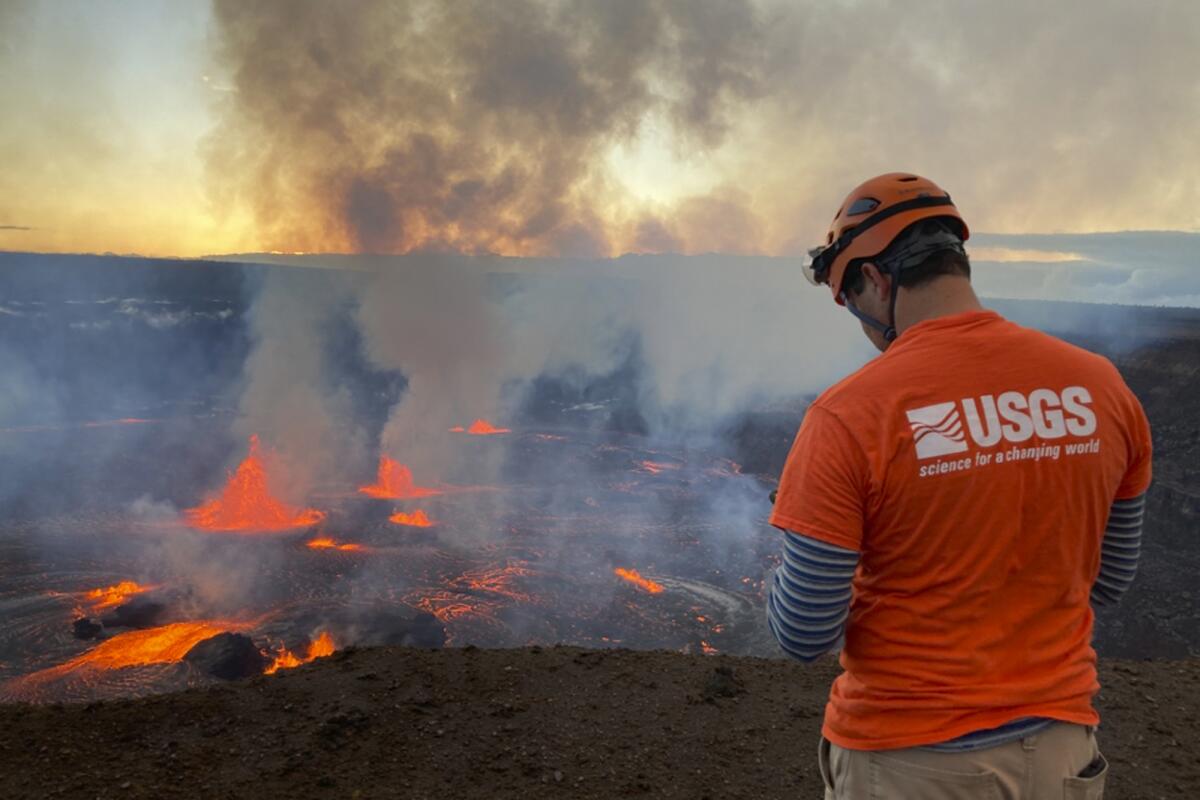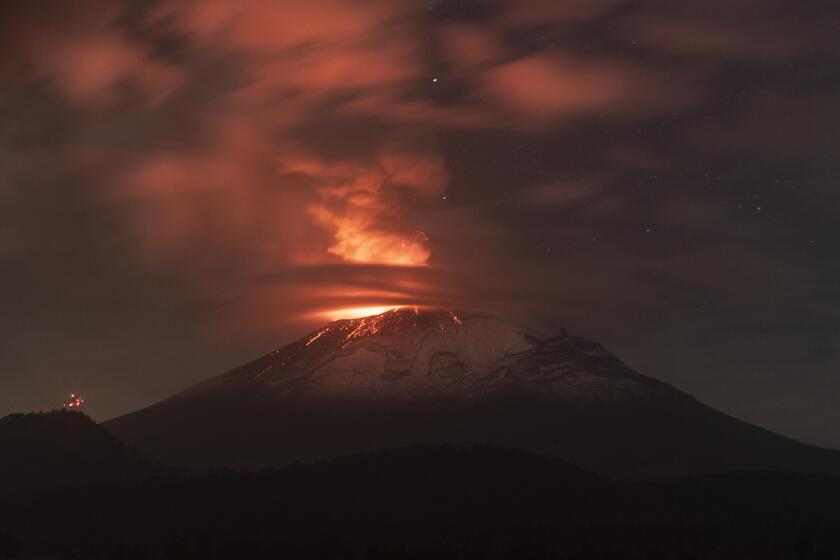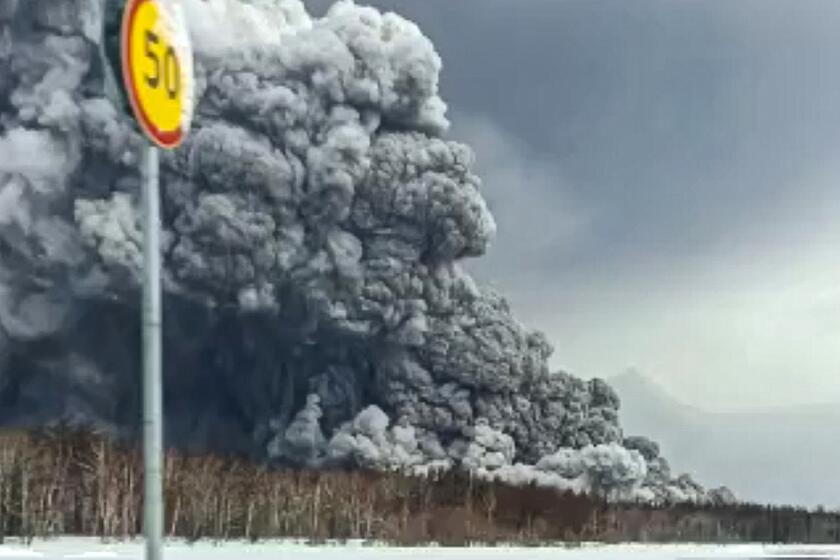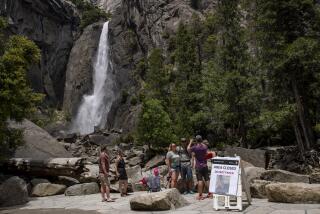‘Be still and take it in’: Hawaii urges mindfulness for visitors to Kilauea eruption

- Share via
HONOLULU — Hawaii tourism officials urged tourists to be respectful when flocking to a national park on the Big Island to get a glimpse of the latest eruption of Kilauea, one of the world’s most active volcanoes.
Kilauea, Hawaii’s second-largest volcano, began erupting recently after a three-month pause.
The U.S. Geological Survey’s Hawaiian Volcano Observatory on Thursday lowered Kilauea’s alert level from “warning” to “watch” because the rate of lava input declined and no infrastructure is threatened. The eruption activity is confined to the closed area of Hawaii Volcanoes National Park.
“Out of respect for the cultural and spiritual significance of a volcanic eruption and the crater area for many kamaʻaina [Hawaii residents], the Hawaii Tourism Authority urges mindfulness when planning a visit to the volcano,” the agency said in a statement Wednesday night.
For many Native Hawaiians, an eruption of a volcano has a deep yet very personal cultural significance. Some may chant, some may pray to ancestors and some may honor the moment with hula, or dance. Hawaiians ask that people keep a respectful distance.
“Don’t just get out your camera and take photos. Stop and be still and take it in,” said Cyrus Johnasen, a spokesperson for Hawaii County who is Hawaiian. “It’s something that you can’t pay for. In that moment, you are one with Hawaii.”
The Philippines is evacuating residents near the Mayon volcano as its increasing unrest possibly indicates a violent eruption in weeks or days.
In recognizing the sacredness of the area, he also urged visitors to refrain from taking rocks, to refrain from horseplay and to leave plants alone.
“A lot of plants up there are native,” he said. “Just be mindful that you will leave a footprint. The idea is you leave one that’s small as possible.”
Word of Kilauea’s lava fountains spread quickly, bringing crowds to the park. “Expect major delays and limited parking due to high visitation,” a warning on the park’s website said Thursday.
There was no exact count available, but officials estimated that the first day and night of the eruption brought more than 10,000 people, which is more than triple the number of visitors on a normal day when Kilauea isn’t erupting, park spokesperson Jessica Ferracane said.
Amid a series of booming eruptions, Mexican authorities have told millions who live near the Popocatépetl volcano to prepare for possible evacuation.
Several thousand viewers were watching the U.S. Geological Survey’s livestream showing red pockets of moving lava Thursday morning.
“We were on social media, and we saw that it was actually going off while we’re here, so we made the drive from the Kona side,” Andrew Choi, visiting with his family from Orange County, told the Hawaii Tribune-Herald. “This feels so ridiculously lucky. We’ve never seen anything like this.”
Park officials suggested visiting at less-crowded times before 9 a.m. or after 9 p.m.
Scientists expect the eruption to continue and remain confined to the Halemaumau crater in the park.
The Shiveluch volcano has erupted on Russia’s eastern Kamchatka Peninsula, sending ash 12 miles into the sky; and volcanic dust engulfs villages.
Early Wednesday, lava fountains were as high as 200 feet and decreased to between 13 feet to 30 feet in the afternoon, according to the observatory.
“People here on Hawaii Island are getting a spectacular show,” Mayor Mitch Roth said. “And it’s happening in a safe place that was built for people to come view it.”
More to Read
Sign up for Essential California
The most important California stories and recommendations in your inbox every morning.
You may occasionally receive promotional content from the Los Angeles Times.













